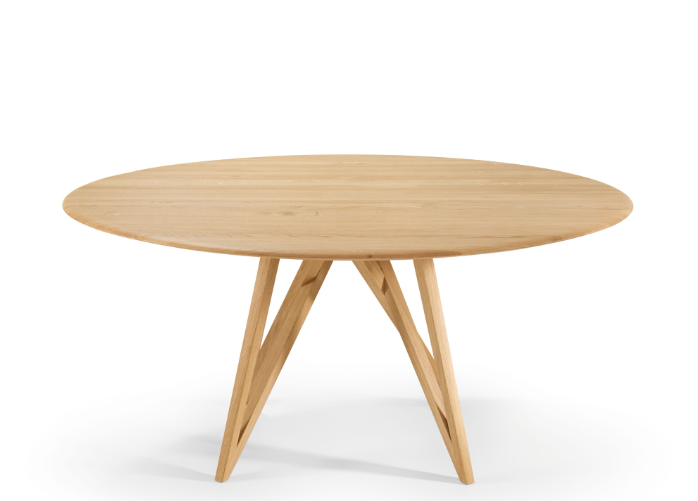Ennéa is known as the Enneagram, is a powerful personality typing system that has gained popularity in recent years. It offers a unique and dynamic perspective on human behavior and provides insights into our motivations, fears, and desires. The word “Ennéa” comes from the Greek word for “nine,” which refers to the nine different personality types or archetypes represented in this system.
The origins of Ennéa can be traced back to ancient civilizations such as Egypt, Greece, and India. However, it wasn’t until the 20th century that ennea was brought to the Western world and popularized as a psychological tool for self-discovery and personal growth.
At its core, ennea is based on the belief that each person is born with a dominant personality type that influences their thoughts, emotions, and behaviors. This dominant type is shaped by childhood experiences and remains relatively stable throughout an individual’s life.
Where did Ennéa originate from?
Ennea is a term that has become increasingly popular in recent years, particularly within the fields of psychology and personal growth. But where did this concept originate from? In order to fully understand ennea and its implications, it is important to explore its roots.
The word “Ennéa” comes from the Greek prefix “ennea,” which means nine. This gives us a clue as to what ennea is all about – it is a system based on the number nine. More specifically, ennea refers to the Enneagram, which is a diagram consisting of a nine-pointed star inscribed within a circle.
The origins of the Enneagram can be traced back to ancient civilizations such as Egypt and Babylon. However, it was not until the 20th century that it gained recognition in Western society through the work of George Ivanovich Gurdjieff, an Armenian mystic and philosopher.
Gurdjieff’s teachings focused on self-awareness and inner transformation through understanding one’s personality traits. He used the Enneagram symbol as a tool for identifying these different personality types and their corresponding characteristics. However, it wasn’t until later that psychologist Oscar Ichazo expanded upon Gurdjieff’s ideas and linked them to modern psychology.
Understanding each Ennéa type and their strengths and weaknesses
Ennea, also known as the Enneagram, is a personality typing system that categorizes individuals into nine distinct types. Each ennea type has its unique set of strengths and weaknesses that shape their thoughts, behaviors, and actions.
Understanding each ennea type and their strengths and weaknesses can provide valuable insights into ourselves and others. It allows us to become more self-aware, develop empathy towards others, and improve our relationships.
Let’s take a closer look at each ennea type and explore their individual traits, strengths, and weaknesses:
Type 1 – The Reformer:
People who belong to Type 1 are often called “the reformers” or “the perfectionists.” They have a strong sense of right and wrong. Their strength lies in being principled, responsible, organized, and disciplined. However, they can also be critical of themselves and others when standards aren’t met.
Type 2 – The Helper:
Type 2 individuals are empathetic and compassionate people who prioritize helping others above all else. They have warm hearts but may struggle with setting boundaries due to their need for approval from others.
Type 3 – The Achiever:
The achievers are ambitious go-getters who strive for success in every aspect of life. They excel at project management skills but may struggle with maintaining deep connections with others due to their focus on achievement.
How to determine your Ennéa type
Determining your ennea type can be an enlightening and transformative experience. The Enneagram is a powerful tool that helps individuals understand their core motivations, patterns, and behaviors. It consists of nine distinct personality types, each with its own set of strengths, weaknesses, and development paths.
If you are new to the Enneagram system, identifying your ennea type may seem overwhelming or confusing at first. However, with some self-reflection and honest introspection, it is possible to determine your ennea type accurately.
Here are some steps to help you figure out your ennea type:
Learn about the nine ennea types:
The first step in determining your ennea type is to familiarize yourself with each of the nine types. Each type has a unique set of characteristics and behaviors that can offer insight into your personality. You can read books or articles about the Enneagram or attend workshops or seminars on the subject.
Take online tests:
Many websites offer free online tests to help determine your ennea type. These tests consist of a series of questions designed to assess your thoughts, feelings, and behaviors. While these tests may not always provide accurate results, they can give you a general idea of which types align more closely with your personality.
Benefits of knowing your Ennéa type
Knowing your ennea type can have numerous benefits and can greatly impact your personal growth and relationships. Here are some of the key benefits of knowing your ennea type:
Self-awareness: Understanding your ennea type helps you gain deep insights into yourself, your thoughts, behaviors, and motivations. By learning about the characteristics of your ennea type, you can become more self-aware and recognize patterns in your actions that you may not have been previously aware of. This knowledge allows you to better understand why you act in certain ways and how to improve them.
Personal growth: Once you have identified your ennea type, it becomes a powerful tool for personal development. Each ennea type has specific strengths and weaknesses, which helps you identify areas where you can grow and work on becoming the best version of yourself. Additionally, understanding other types can also help broaden your perspective on life as a whole.
Improve relationships: Enneagram provides insights into our behavior patterns that affect our relationships with others. When we understand our own tendencies and those of others around us, it becomes easier to communicate effectively and build stronger connections with people in our lives.
Better decision-making: Knowing about our core fears, motivations, and desires according to our ennea types gives us a better understanding of what drives us to make decisions in different aspects of life such as career choices or romantic relationships.
Ennéa in relationships and communication
Ennea, also known as the Enneagram of Personality, is a popular personality typing system that categorizes people into nine different types. Beyond simply understanding ourselves, ennea can also be used to gain insight into our relationships with others and improve our communication skills. In this section, we will delve deeper into how ennea can be applied in relationships and communication.
Understanding your own type
The first step in using it to enhance your relationships is to understand your own type. Each type has its own unique motivations, fears, and behaviors. By discovering which type you fall under, you can better understand why you may act or respond a certain way in relationships.
For example, if you are an Enneatype Two (The Helper), you may tend to put others’ needs before your own and have a fear of being unloved or unwanted. Knowing this about yourself can help you become more aware of when these tendencies arise and make conscious efforts to communicate your needs effectively instead of always prioritizing others’.
Understanding your partner’s type
Just as it is important to know your own type, it is equally important to understand the types of those close to you – especially in romantic relationships. Knowing your partner’s enneatype can give you valuable insights into their thoughts, emotions, and behaviors.
By understanding their motivations and fears, as well as how they handle stress or conflicts differently from you, it can help foster empathy and compassion towards each other.
Common misconceptions about Ennéa
There are many misconceptions and misunderstandings about the concept of it, also known as the Enneagram. These misunderstandings often stem from a lack of information or misinformation spread by individuals who may not fully understand the principles behind it. In this section, we will debunk some of the most common misconceptions surrounding it.
Ennéa is a personality test.
This is perhaps one of the most widespread misconceptions about it. While it does involve identifying certain personality traits, it is not simply a test that determines your character like other popular personality tests such as Myers-Briggs or DISC. Instead, it is a complex system that aims to uncover one’s motivations, fears, and desires in order to foster personal growth and self-awareness.
Ennéa labels people into nine rigid categories.
Another misconception about ennea is that it puts individuals into strict boxes based on their type number (1-9). This couldn’t be further from the truth. It recognizes that everyone possesses all nine types within themselves to some degree, and our dominant type can shift and evolve over time. Additionally, each type has healthy and unhealthy levels which are constantly fluctuating depending on external circumstances.
Applying Ennéa to daily life and personal growth
Applying ennea to daily life and personal growth is a powerful way to gain insight into your own thoughts, emotions, and behaviors. The enneagram system provides a framework for understanding the core motivations and fears that drive our actions, as well as our strengths and potential areas for growth.
One of the key benefits of using the enneagram in daily life is its ability to help us navigate conflicts and challenges in relationships. By identifying our individual its type (1-9), we can better understand how we tend to react in certain situations and learn healthier ways to communicate with others. For example, if you are a Type 2 (the Helper), you may have a tendency to people-please or avoid conflict, which can lead to resentment and burnout. By becoming aware of this pattern, you can work on setting healthy boundaries and assertively expressing your needs.
The ennea also offers valuable insights into how we cope with stress. Each type has specific patterns of behavior that emerge when they are under pressure or feeling overwhelmed. Knowing our natural defense mechanisms allows us to recognize when we are slipping into these unhelpful responses and make conscious efforts to choose more productive coping strategies.
In terms of personal growth, the path towards self-awareness through the enneagram involves moving beyond our automatic reactions and finding freedom from limiting beliefs about ourselves. This process requires deep reflection on our inner motivations, acknowledging our shadows, and letting go of old patterns that no longer serve us.







